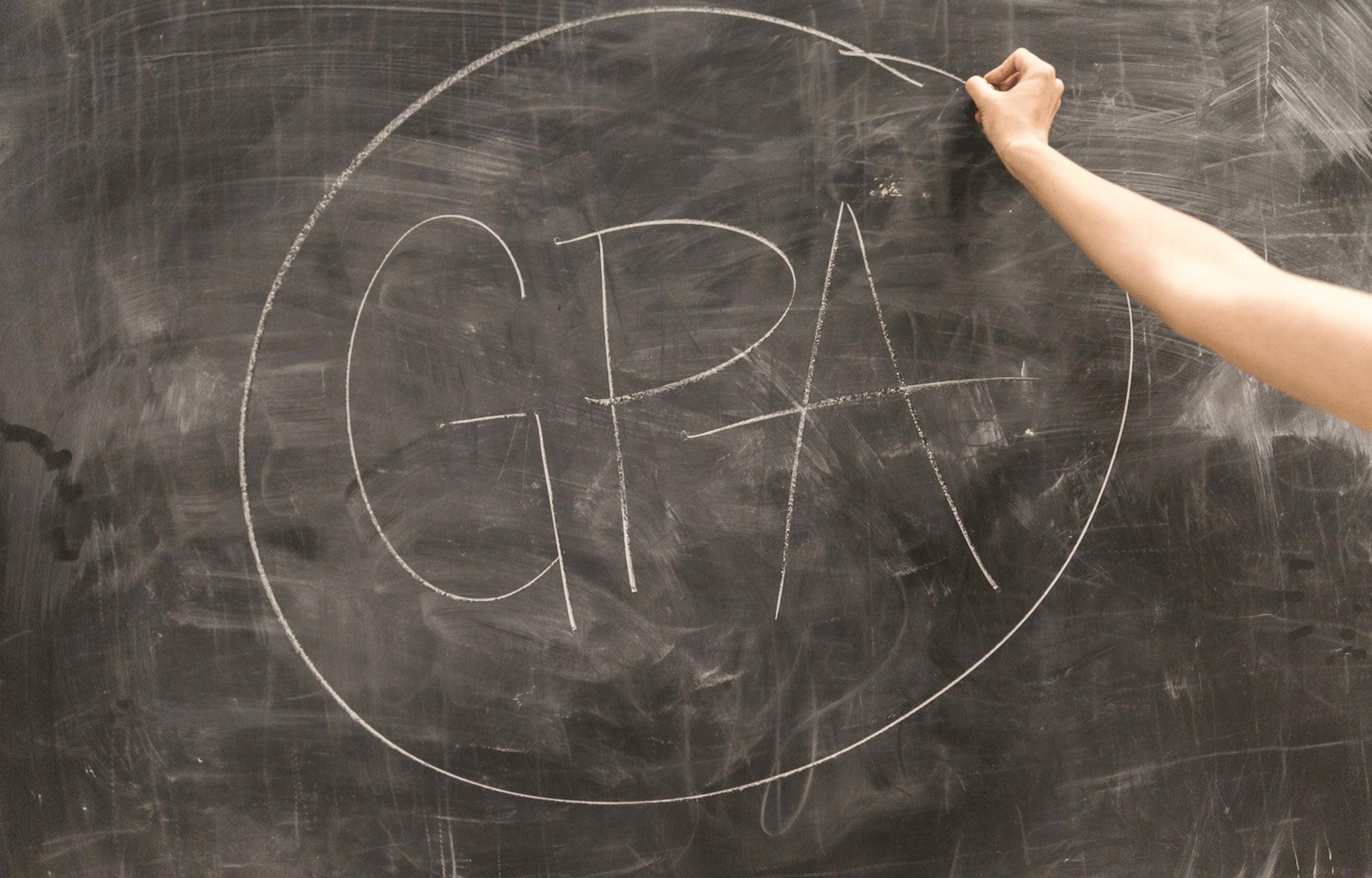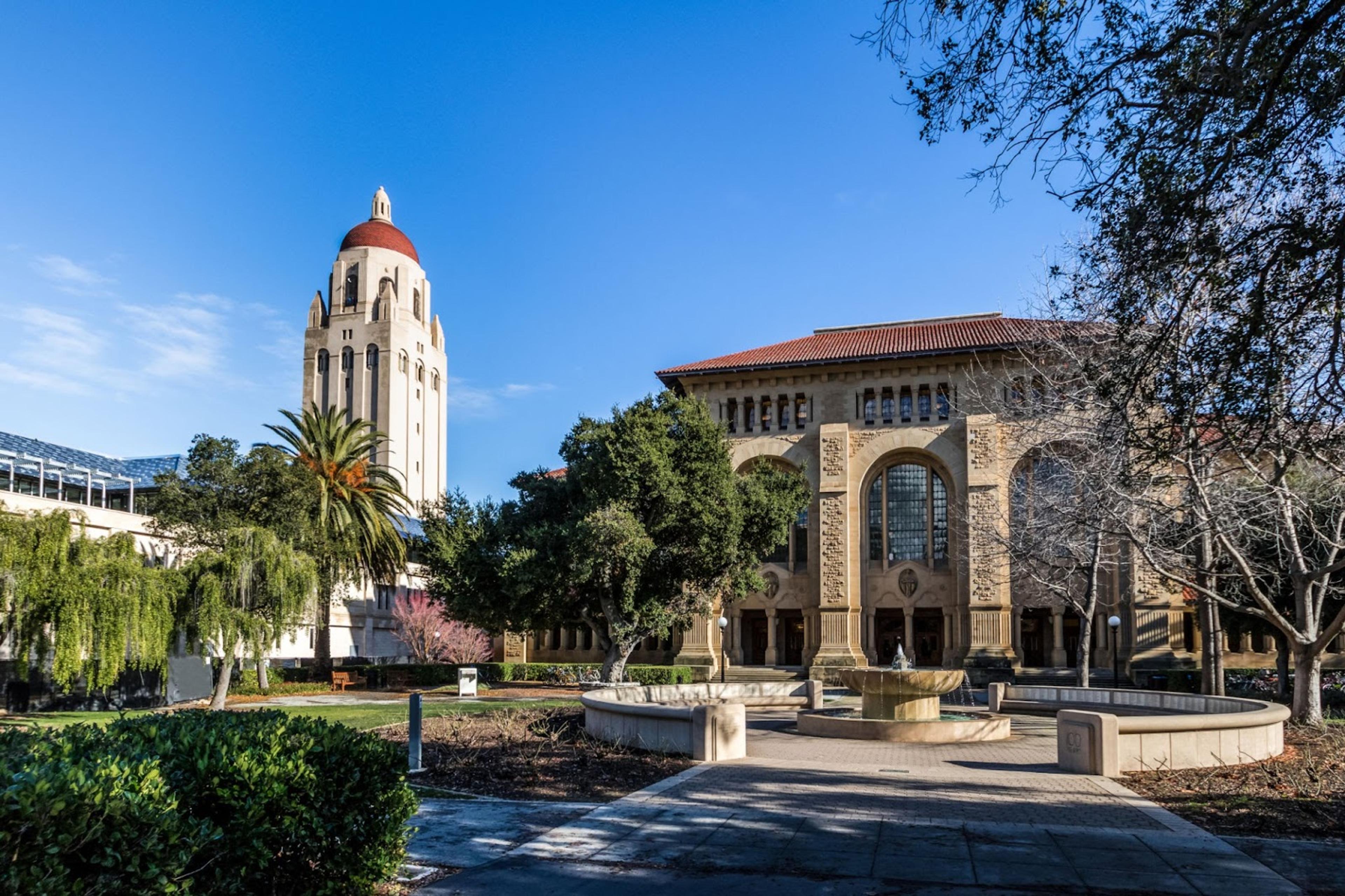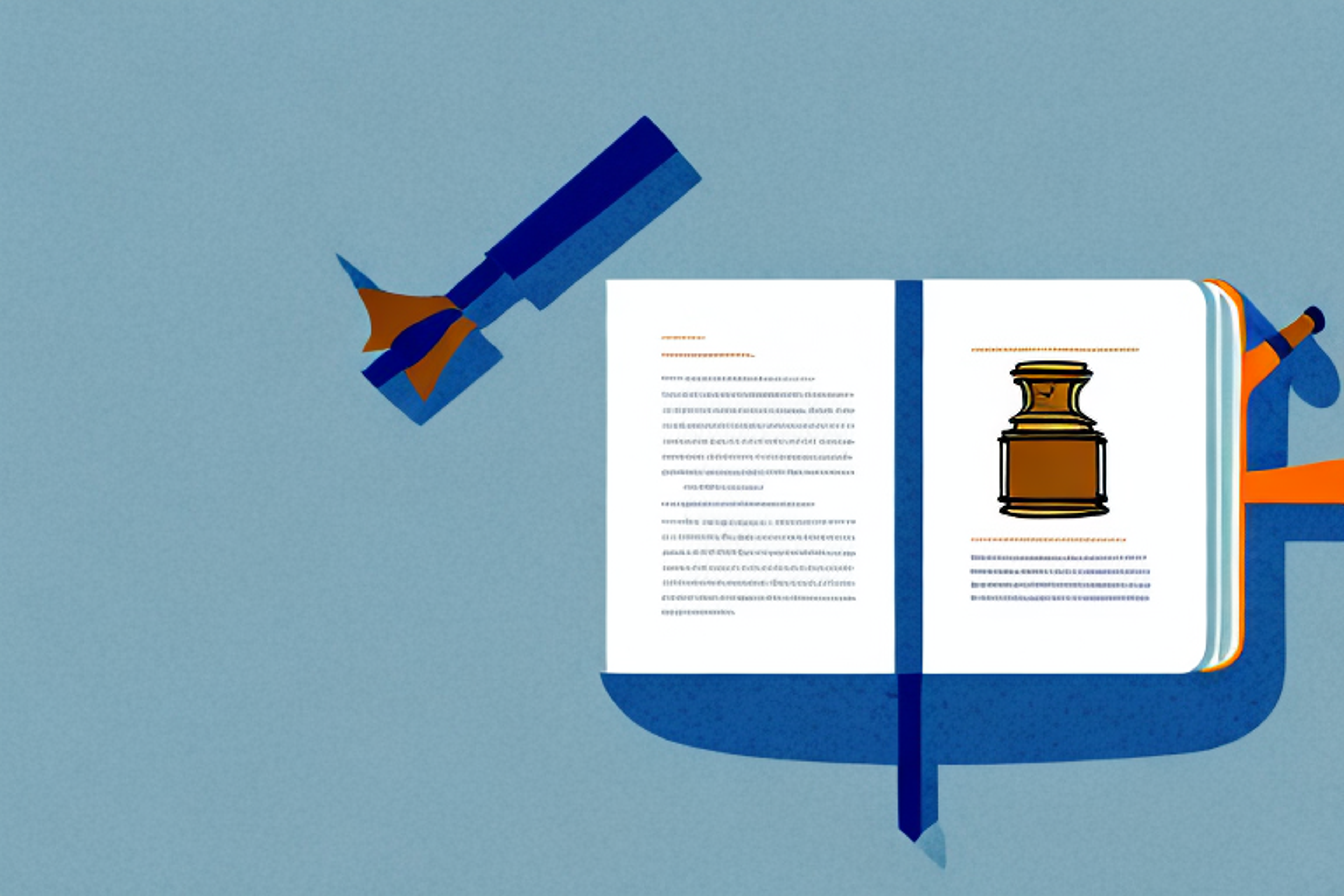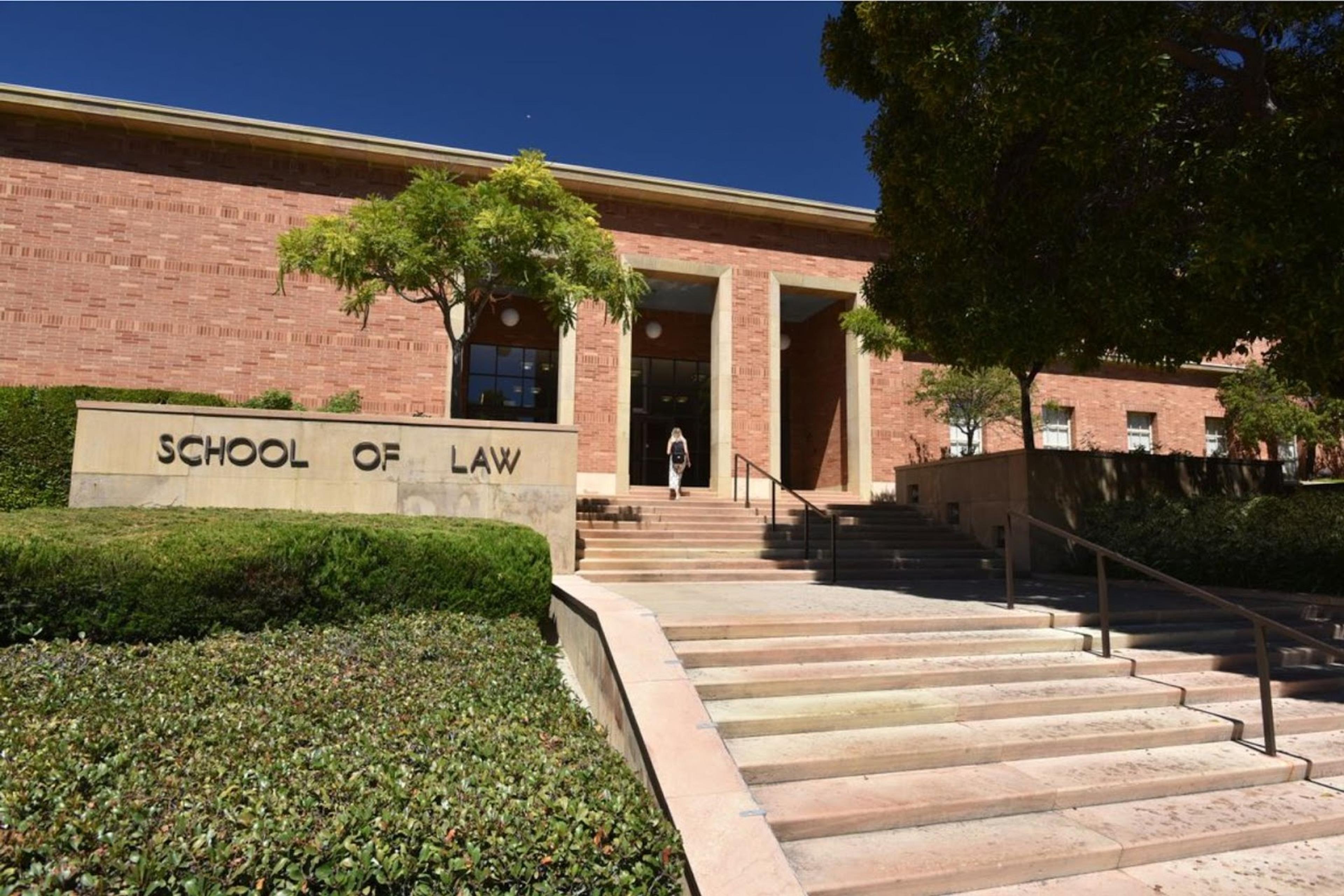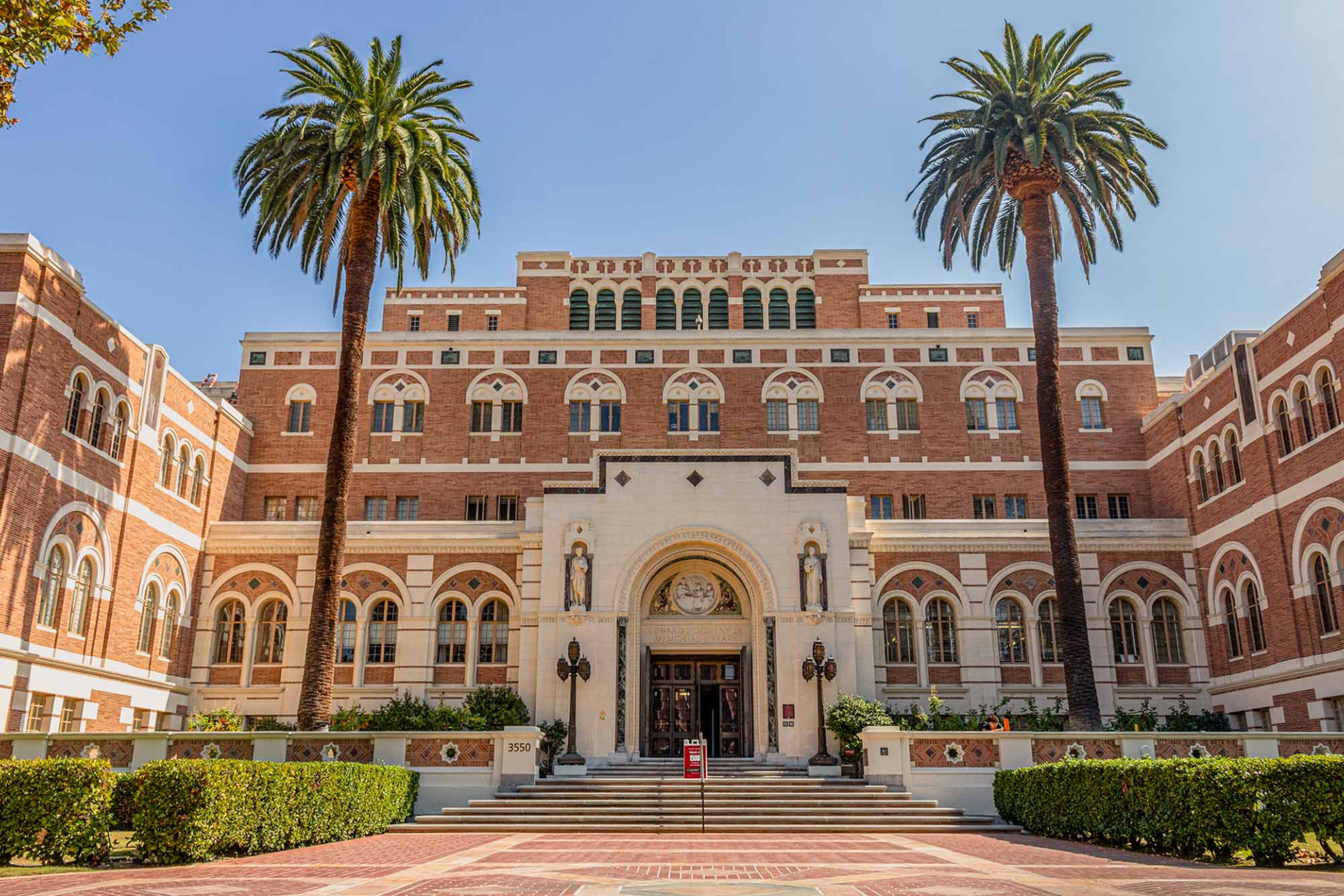How to Get Into William and Mary Law School
Learn how to get into William and Mary Law School with expert insights on LSAT scores, GPA, acceptance rates, and application tips. Explore admissions data, scholarships, and what makes W&M Law a top-ranked program for aspiring lawyers.
Posted July 18, 2025

Table of Contents
Free Event

Featuring Indrani S.
How To Write Outstanding Law School Application Essays
Starting Tuesday, September 2
11:30 PM UTC · 60 minutes

Featuring Indrani S.
How Hard Is It to Get Into William & Mary Law School?
William & Mary Law School, also known as the Marshall-Wythe School of Law, is a competitive public law school with an acceptance rate of 32.23% for the JD Class of 2026 (students who entered in Fall 2024). The school received 1,564 applications and admitted 504 students, with 158 enrolling. This puts the yield rate at 31.35%, meaning about one-third of admitted students chose to enroll.
The median LSAT score for incoming students is 164, with the 25th-75th percentile range between 159 and 166. The median undergraduate GPA is 3.75, with an interquartile range from 3.49 to 3.86. These numbers show that while William & Mary Law is competitive, it admits a broad range of students who demonstrate strong academic ability.
The law school follows a holistic admissions process, meaning factors beyond LSAT scores and GPAs matter. The admissions committee evaluates work experience, leadership roles, personal statements, letters of recommendation, and extracurricular involvement. Additionally, the student-to-faculty ratio ensures that students receive personalized attention and support throughout their educational experience.

William & Mary Law School Acceptance Rate Over Time
William & Mary Law School, also known as the Marshall-Wythe School of Law, has seen fluctuations in its acceptance rate over the past several years. The school remains competitive while balancing a mix of in-state and out-of-state students. Below is the most accurate and up-to-date data on admissions trends from 2021 to 2024, based on official ABA 509 Reports.
William & Mary Law School Acceptance Rates (2021-2024)
| Class Year | Applications Received | Offers of Admission | Enrolled Students | Acceptance Rate | Yield Rate |
|---|---|---|---|---|---|
| 2024 | 1,564 | 504 | 158 | 32.23% | 31.35% |
| 2023 | 2,248 | 614 | 146 | 27.31% | 23.78% |
| 2022 | 1,541 | 709 | 211 | 46.01% | 29.76% |
| 2021 | 2,642 | 795 | 164 | 30.09% | 20.63% |
The school's employment rate is strong, with a significant percentage of graduates securing jobs in private practice, judicial clerkships, government, and public interest roles within ten months of graduation.
Programs Offered by William & Mary Law School
William & Mary Law offers several degree programs, each designed to provide students with a strong foundation in legal education and experiential learning opportunities.
Juris Doctor (J.D.) Program
The Juris Doctor (J.D.) program at William and Mary Law School is a three-year, full-time program that provides students with a rigorous legal education and hands-on training. The curriculum includes foundational courses in Contracts, Torts, Property, Civil Procedure, Criminal Law, and Constitutional Law, ensuring a strong legal foundation. Students have the opportunity to specialize through a wide range of elective courses in areas such as business law, environmental law, intellectual property, and public policy. To enhance practical skills, the program requires experiential learning, which includes participation in legal clinics, externships, and pro bono service, allowing students to work with real clients under faculty supervision.
Master of Laws (LL.M.) in American Legal Studies
The Master of Laws (LL.M.) in American Legal Studies is a one-year program designed specifically for internationally trained lawyers who seek to gain expertise in the American legal system. The program provides a flexible curriculum, allowing students to tailor their coursework to their career goals, whether they aim to sit for a U.S. bar exam, work in international law, or transition into the American legal market. Students take classes alongside J.D. candidates, gaining exposure to U.S. legal principles, judicial processes, and professional ethics while building connections within the legal community.
Joint Degree Programs
William and Mary Law School also offers joint-degree programs, allowing students to earn an additional graduate degree alongside their J.D., expanding their career opportunities. The J.D./M.B.A. program, in collaboration with the Raymond A. Mason School of Business, integrates legal and business education, preparing students for careers in corporate law, finance, and management. The J.D./M.P.P. program, offered with the School of Public Policy, is ideal for students interested in the intersection of law, governance, and public policy, providing training in policy analysis and legislative advocacy. The J.D./M.A. in American Studies, in partnership with the College of Arts & Sciences, blends law with history, culture, and interdisciplinary research, making it an excellent choice for those pursuing careers in academia, public interest law, or government service. These joint-degree options enable students to complete both degrees in a shorter timeframe than pursuing them separately, maximizing their professional and academic potential.
- J.D./M.B.A. – In partnership with the Raymond A. Mason School of Business
- J.D./M.P.P. – With the School of Public Policy
- J.D./M.A. in American Studies – With the College of Arts & Sciences
Experiential Learning at William & Mary Law
Students gain real-world experience through:
- Clinics: Immigration, Innocence Project, Business Law, Family Law, and Veterans Benefits
- Externships: Work under the supervision of judges, government agencies, and private law firms
- Moot Court and Trial Team: Participate in national competitions
- Pro Bono Opportunities: Gain experience representing clients under faculty supervision
Admissions Requirements — Who Gets Into Harvard Law School?
William & Mary Law School Admissions Stats: LSAT, GPA, & Class Profile
William & Mary Law School’s most recent entering class (2025) consists of 160 students, selected from 1,562 applicants. The class represents a diverse range of academic backgrounds and geographic locations. Students come from 102 different undergraduate institutions, including 10 in Virginia and over 90 from across the United States and internationally.
William & Mary Law School, the oldest law school in the United States, currently enrolls a diverse student body pursuing legal degrees.
- Students of Color: 25% (14% Asian, 7% Black/African American, 3%
- Hispanic/Latino, 1% American Indian/Alaskan Native)
- Hispanic/Latino: 3%
- Black/African American: 7%
- Asian: 14%
- Two or More Races: (not specified for 2025)
- First-Generation College Students: 14%
- Advanced Degree Holders: ~7%
- Military Veterans/Active Duty Service Members: 6%
| 25th Percentile | 50th Percentile (Median) | 75th Percentile | |
|---|---|---|---|
| GPA | 3.50 | 3.75 | 3.85 |
| LSAT | 160 | 165 | 166 |
The school’s admissions process is competitive, with an acceptance rate of 32.23% and a yield rate of 31.35%. The faculty-student ratio supports an engaging academic environment with access to hands-on learning opportunities through clinics, externships, and experiential programs.
You can view the William and Mary Law School Class Profile through the ABA
What LSAT Score Do You Need for William & Mary Law School?
- 25th Percentile: 159
- 50th Percentile (Median): 164
- 75th Percentile: 166
To be a competitive applicant for William & Mary Law School, an LSAT score of 164 or higher is recommended. The middle 50% of admitted students have LSAT scores ranging from 159 (25th percentile) to 166 (75th percentile), meaning most successful applicants score in the mid-to-high 160s. While it is possible to gain admission with a lower LSAT score, applicants with scores below 159 must present a compelling application, including a strong GPA, work experience, leadership roles, and well-crafted essays.
What GPA Do You Need for William & Mary Law School?
- 25th Percentile: 3.49
- 50th Percentile (Median): 3.75
- 75th Percentile: 3.86
William & Mary Law School values strong academic performance, with the median undergraduate GPA for admitted students at 3.75. The middle 50% of accepted students have GPAs ranging from 3.49 to 3.86. If your GPA is below 3.49, your application will need to be exceptional in other areas, such as an outstanding LSAT score, strong letters of recommendation, and relevant work or service experience.
How to Get Into William & Mary Law With a Low GPA or LSAT Score
- Write a compelling personal statement – Your essays are a critical part of your application and can help offset lower numbers by showcasing your motivation, character, and commitment to law.
- Secure strong letters of recommendation – William & Mary values detailed and specific recommendations that highlight academic ability, leadership, and work ethic.
- Consider retaking the LSAT – If your score is below the median, studying and retaking the LSAT can improve your chances. Even a small increase can make a difference.
- Write an addendum – If personal hardships or circumstances impacted your GPA or LSAT score, explain them in a brief, professional addendum.
- Apply early – William & Mary has a rolling admissions process, so applying as early as possible can improve your chances.
- Gain work experience – Applicants with relevant work experience, especially in legal, government, or public service roles, may have a competitive edge despite lower academic stats.
William and Mary Law School Application Deadlines (2025)
First-Year J.D. Applicants
- Application Opens: September 1, 2025
- Priority Application Deadline: April 1, 2026
- Final Application Deadline: August 1, 2026
- FAFSA Submission Recommended Date: February 15, 2026
- LSAT Testing Deadline: April 2026 (Oldest acceptable LSAT score: June 2023)
William & Mary follows a rolling admissions process, so applying early increases the chances of admission and financial aid consideration.
Transfer Applicants
- Application Opens: May 1, 2026
- Application Deadline: June 15, 2026
- Decision Notifications: June – August 2026
Visiting Applicants
- Application Opens: May 1, 2026
- Application Deadline: June 15, 2026
- Decision Notifications: June – August 2026
William and Mary Law School Application Overview
William & Mary Law School offers a three-year, full-time J.D. program with opportunities for experiential learning, joint degrees, and public service. The school admits students on a rolling basis, meaning early applicants have an advantage in securing admission and financial aid. Below is a step-by-step guide to submitting a complete and competitive application.
1. Complete the LSAC Electronic Application
Applicants must submit their application through the Law School Admission Council (LSAC). Registration with LSAC’s Credential Assembly Service (CAS) is required, and applicants should ensure all materials, including transcripts and letters of recommendation, are submitted through this service.
Application Deadlines:
- Applications open: September 1, 2025
- Priority Deadline: April 1, 2026
- Final Deadline (Space Available Basis): August 1, 2026
Because William & Mary follows a rolling admissions process, applying early increases the likelihood of admission and scholarship consideration.
2. Pay the Application Fee
- Fee: $85 (non-refundable)
- Fee waivers are available through LSAC’s Fee Waiver Program or by request from the William & Mary Admissions Office.
3. Submit Required Essays
William & Mary requires two essays:
- Personal Statement (Maximum: 500 words)
- This is an opportunity to highlight academic achievements, leadership experiences, professional goals, and personal background.
- Why William & Mary Law Statement (Maximum: 500 words)
- Applicants should explain how their goals, values, and experiences align with William & Mary Law School’s mission and traditions.
Each essay should be double-spaced, 12-point font, and formatted professionally.
Optional Essays: Applicants may submit additional statements to strengthen their applications. These include:
- Diversity Statement: Applicants may describe how their background, experiences, or perspectives contribute to the law school community.
- Addenda: Applicants may submit a short statement explaining LSAT scores, GPA inconsistencies, or Character & Fitness disclosures.
4. Submit a Resume
A one- to two-page resume is required, detailing education, work experience, leadership roles, extracurricular activities, and community service.
Resume Guidelines & Tips
- Keep it to 1-2 pages
- Use clear headings and bullet points, don’t get fancy
- List your educational background in reverse chronological order, including degrees earned, institutions attended, and graduation dates
- Focus on experiences and accomplishments that align with your aspirations in law and the values of William and Mary Law School
- Use action verbs and quantify achievements where possible to provide a clear picture of your contributions and impact.
5. Submit Letters of Recommendation
- Two letters are required (up to three allowed)
- At least one letter should be from an academic source unless the applicant has been out of school for more than two years.
- Letters must be submitted through LSAC’s Credential Assembly Service (CAS).
6. LSAT Requirement
- William & Mary requires the LSAT.
- Oldest LSAT accepted for the 2025 cycle: June 2023
- Latest LSAT accepted: April 2025 (June 2025 scores accepted for applicants on a space-available basis).
Note: William & Mary does not have a minimum LSAT score, but a competitive score increases admission chances. Applicants concerned about their score may submit an LSAT Addendum explaining any discrepancies.
7. TOEFL/IELTS (For International Applicants)
Applicants whose first language is not English and whose undergraduate degree was not taught in English must submit:
- TOEFL or IELTS scores (in addition to the LSAT).
8. Virginia In-State Tuition Application
Virginia residents and active-duty military members should complete the Virginia Application for In-State Tuition Privileges, available through the Office of the University Registrar.
Visit the William and Mary Law School Requirements for Admission
Different Types of Applicants — Requirements for William & Mary Law School
William & Mary Law School accepts first-year J.D. students, transfer students, visiting students, dual-degree applicants, international students, and military-affiliated applicants. Each category has specific requirements, deadlines, and eligibility criteria that applicants must meet before submitting their application.
First-Year J.D. Applicants
First-year J.D. applicants must complete the LSAC Electronic Application, submit a personal statement, a "Why William & Mary Law" statement, and a résumé limited to two pages. Two letters of recommendation are required, with at least one from an academic source unless the applicant has been out of school for more than two years. Applications open on September 1, with a priority deadline of April 1, though they are accepted until August 1 on a space-available basis. Applicants must take the LSAT no later than April 2025, and the oldest acceptable LSAT score for the 2025 cycle is June 2022. Optional materials, such as a diversity statement or addenda explaining LSAT scores or GPA fluctuations, may also be submitted.
Transfer Applicants
Transfer applicants must have completed at least one year at an ABA-accredited law school and submit an LSAC Electronic Application, official law school transcript, letter of good standing, personal statement, résumé, and two letters of recommendation (one from a law professor). The Credential Assembly Service report, including undergraduate transcripts and LSAT scores, is required. Transfer applications open on May 1 and close on June 15, with decisions released between June and August. Up to 32 transfer credits may be accepted toward the J.D. degree, with admissions decisions based on law school performance and reasons for transferring.
Visiting Applicants
Visiting applicants are students currently enrolled at another ABA-accredited law school who wish to study at William & Mary for one or two semesters before returning to their home institution. Applicants must submit the LSAC Electronic Application, an official law school transcript, a letter of good standing from their home law school, a personal statement explaining their reason for visiting, and a résumé. Applications open on May 1 and close on June 15, with decisions announced between June and August. Admission is based on academic performance and space availability.
Combination Degree Applicants
Combination degree applicants can pursue a J.D. alongside an additional graduate degree, including the J.D./M.B.A. with the Mason School of Business, the J.D./M.P.P. with the School of Public Policy, and the J.D./M.A. in American Studies with the College of Arts & Sciences. Applicants must submit separate applications to both programs and meet each program’s admission requirements, including standardized test scores (LSAT for the law school and GRE for some graduate programs). Most students complete both degrees in four years instead of five. Admission to one program does not guarantee admission to the other, and students must meet both academic and application standards.
International Applicants
International applicants may apply to either the J.D. or LL.M. in American Legal Studies program. J.D. applicants must follow the same application process as domestic applicants, including submitting an LSAT score. If English is not the applicant’s first language and their undergraduate education was not conducted in English, they must provide a TOEFL or IELTS score. LL.M. applicants have different application requirements and deadlines, as the program is designed for international lawyers seeking an understanding of the American legal system. LL.M. students typically complete the program in one year and may later apply to the J.D. program as transfer students.
Active-Duty Military and Veteran Applicants
Active-duty military personnel, veterans, and reservists are encouraged to apply and must follow the same process as first-year J.D. or transfer students. They should submit military transcripts, a personal statement emphasizing their military experience, a résumé highlighting leadership roles, and two letters of recommendation. Veterans may qualify for tuition assistance through the Yellow Ribbon Program, and active-duty personnel may qualify for in-state tuition once they move to Virginia. The law school values applicants with military experience for their leadership, discipline, and commitment to public service.
Note: Regardless of the applicant type, William & Mary Law School evaluates candidates holistically, considering academic performance, leadership qualities, work experience, and personal attributes. Submitting a complete, well-prepared application as early as possible increases the likelihood of admission.
5 Expert Tips on How to Get Into William & Mary Law School
1. Craft a "Why William & Mary Law" Statement That Goes Beyond Generic Praise
One of the biggest mistakes applicants make is submitting a "Why William & Mary Law" statement that could apply to any top-tier law school. The admissions committee is looking for applicants who have done their homework and can articulate a specific, personal reason for choosing W&M. Go beyond talking about its history as the nation’s first law school or its strong faculty—every applicant already knows that. Instead, highlight particular clinics, faculty members whose research aligns with your interests, or unique experiential learning opportunities that fit your career goals. For example, if you are interested in public service law, discuss the Puller Veterans Benefits Clinic and how it aligns with your commitment to serving veterans. If business law is your focus, mention the Business Law Review and how you plan to contribute to it. The more specific you are, the more convincing your statement will be.
2. Target the LSAT Based on Strategic Score Clustering
William & Mary Law considers applicants with a range of LSAT scores, but understanding the score clustering of admitted students can help you set a more precise goal. If your LSAT is below the 25th percentile (159), your application will need to be exceptional in other areas, and you should strongly consider retaking the test. If you fall between the 50th percentile (164) and the 75th percentile (166), you're in a solid position but should still aim to strengthen the other components of your application. A high LSAT score can offset a weaker GPA, but a low LSAT score without compelling compensating factors (such as significant work experience or exceptional leadership roles) will make admission difficult. The ideal strategy is to score above the 75th percentile to increase merit-based scholarship eligibility, reducing the financial burden of law school.
3. Prioritize Strong Faculty Recommendations Over Prestigious Names
Many applicants assume that getting a letter of recommendation from a well-known professor or a high-ranking professional will impress the admissions committee. In reality, a strong, detailed letter from a professor who knows you well is far more valuable than a generic endorsement from a famous name. William & Mary Law is an academic institution that values intellectual curiosity and engagement, so a letter from a professor who can speak to your ability to think critically, contribute to class discussions, and handle rigorous coursework will carry more weight than a vague recommendation from a distant mentor. If you have been out of school for several years, a letter from an employer highlighting your analytical skills, leadership, and work ethic can be just as impactful. Choose recommenders who can provide detailed anecdotes about your capabilities rather than just listing your strengths.
4. Use Your Resume as a Strategic Storytelling Tool
Many applicants treat their resume as a simple list of achievements, but at William & Mary Law, it should serve as a strategic storytelling tool. Law schools receive thousands of applications, so your resume should immediately communicate what makes you unique. Instead of just listing job titles and responsibilities, provide brief context for each role. If you worked as a paralegal, specify the types of cases you assisted with. If you were involved in research, explain how it contributed to legal scholarship. Use metrics when possible—for instance, "managed 15 pro bono cases assisting low-income tenants in eviction proceedings" is far more compelling than "worked at a legal aid office." Your resume should reinforce the themes in your personal statement and highlight your commitment to law.
5. Submit an Addendum Only if It Strengthens Your Application
Many applicants assume that writing an addendum explaining a low GPA, LSAT score, or other weaknesses is always a good idea. However, a poorly written addendum can actually harm your application more than it helps. William & Mary Law School’s admissions team appreciates transparency but also values applicants who take ownership of their academic and professional records. If you choose to submit an addendum, keep it factual, concise, and forward-looking. For example, if your GPA was lower due to a personal hardship, briefly state the circumstances and focus on what you learned from the experience. Avoid making excuses or writing an overly emotional plea—admissions committees prefer applicants who acknowledge challenges and demonstrate resilience. If there is no compelling reason for a lower LSAT or GPA, skipping the addendum may be the best strategy.
Note: Prospective students have the opportunity to engage in one-on-one information sessions with the admissions dean at William & Mary Law School. These sessions, conducted via Zoom, provide applicants with a chance to ask questions and gain insights into the admissions process. To schedule a session, prospective applicants can contact the admissions office at [email protected].
The Bottom Line
William & Mary Law School offers a rigorous legal education with a strong emphasis on experiential learning, preparing students for successful careers in private practice, public interest, government, and academia. With a median LSAT score of 164 and a median GPA of 3.75, the admissions process is competitive, but the school takes a holistic approach, considering leadership, work experience, and commitment to the legal profession. The law school provides robust financial aid options, with nearly all students receiving some form of scholarship or grant. While not an Ivy League institution, William & Mary is widely regarded as a "Public Ivy," delivering top-tier education at a more affordable cost, particularly for in-state students. Prospective applicants should focus on crafting a compelling personal statement, securing strong letters of recommendation, and demonstrating a clear dedication to legal service. With an employment rate that reflects the strength of its network and curriculum, William & Mary Law remains an excellent choice for those looking to excel in the legal field.
Need Help With Your Application?
Work with an admissions coach to craft a strong personal statement, refine your resume, and prepare for interviews.
See: The 10 Best Law School Coaches | Law School Admissions Consulting That Works
Related Articles
- LSAT vs. GRE for Law School–Which to Take and How to Ace Both
- How to Decide Where to Apply for Graduate School
- The Top 10 Accelerated JD Programs
- How to Write a Powerful Personal Statement for Your Law School Applications
- How to Get Into Law School: Advice from an Expert
- Top 30+ Free Resources for the LSAT
- How Many Letters of Recommendation for Law School: A Comprehensive Guide
- How to Answer the Most Common Law School Interview Questions
FAQs
Is William & Mary a good law school?
- Yes, William & Mary Law School is consistently ranked among the top law schools in the U.S. It is known for its strong academic curriculum, experiential learning opportunities, and high employment rates. As the oldest law school in the country, it has a rich history and a reputation for producing successful graduates in various legal fields, including private practice, government, and judicial clerkships.
What LSAT score do I need for William & Mary?
- The median LSAT score for admitted students is 164, with the middle 50% of students scoring between 159 and 166. While a score within this range makes you competitive, applicants with lower scores may strengthen their application with a strong GPA, compelling personal statements, and relevant work experience.
How hard is it to get into William & Mary Law School?
- William & Mary Law School has a selective admissions process, with an acceptance rate of around 32%. The admissions committee evaluates candidates holistically, considering LSAT scores, undergraduate GPA, personal statements, work experience, and letters of recommendation. Strong applications often showcase leadership, community involvement, and a commitment to the legal profession.
Is William & Mary Law School Ivy League?
- No, William & Mary Law School is not part of the Ivy League, which consists of eight private universities in the Northeast. However, it is considered a "Public Ivy" due to its rigorous academic standards, distinguished faculty, and strong reputation in the legal field. Many graduates go on to top law firms, judicial clerkships, and influential public service roles.

